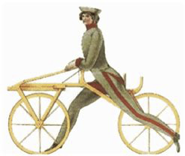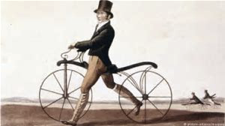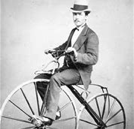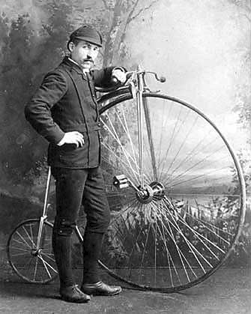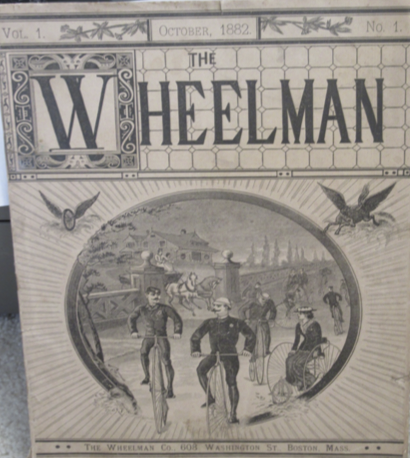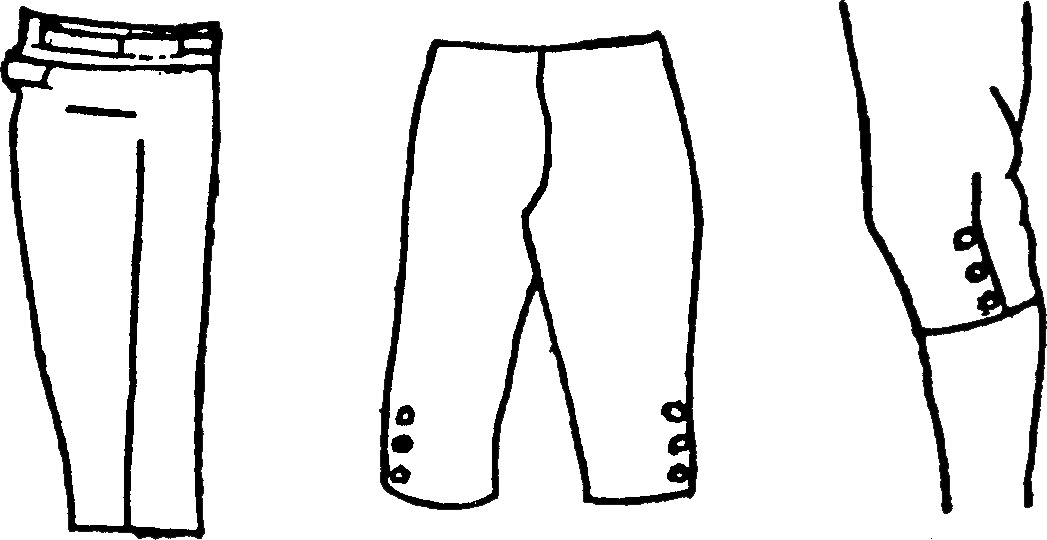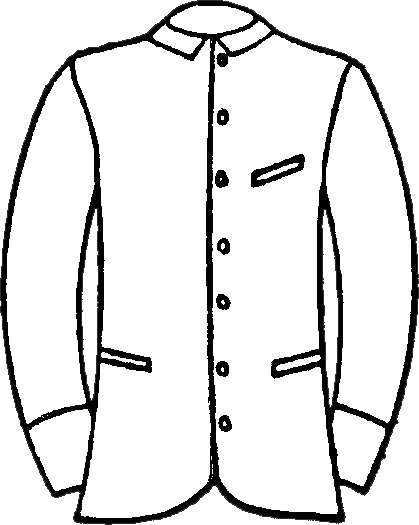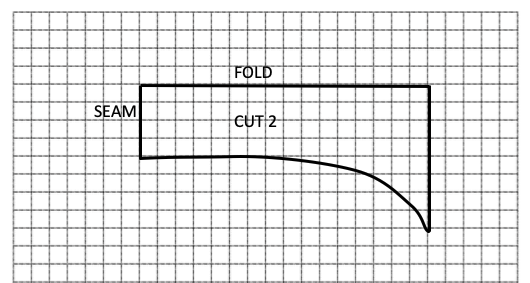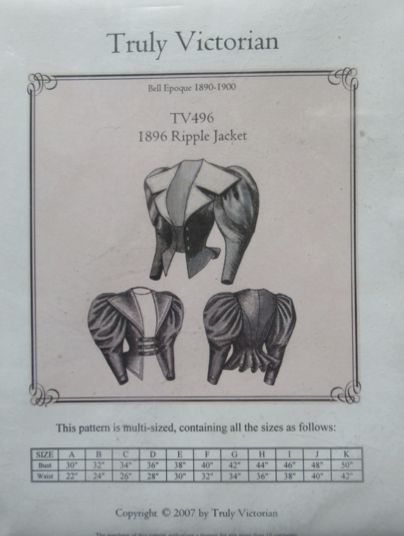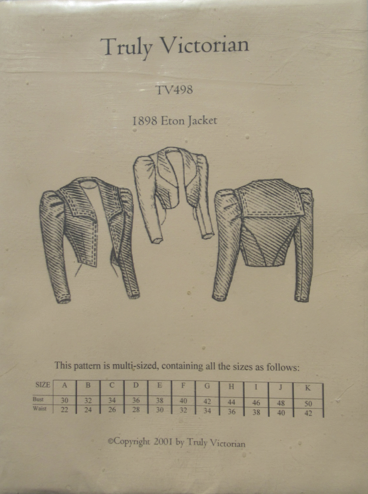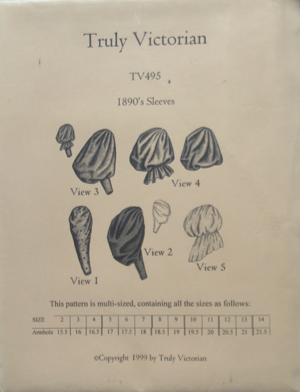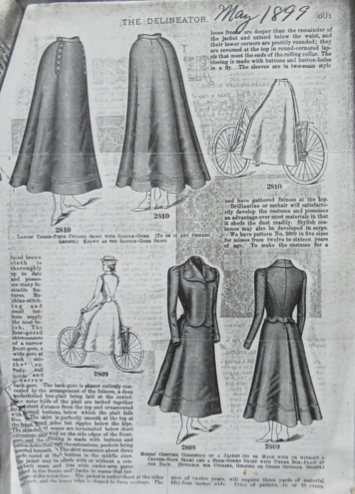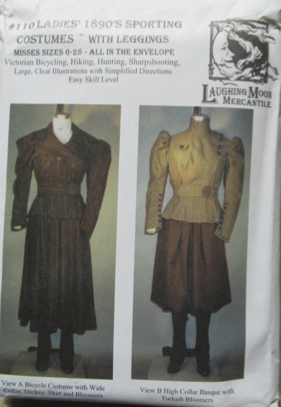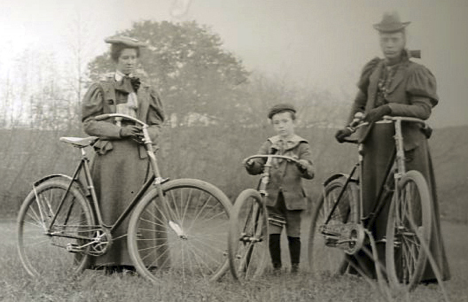 |
Bulletins |
|
Home |
About Us |
53nd Meet |
Membership |
State Divisions |
Commander's Message |
Antique Photos |
New Photos |
Videos |
Officers |
Bulletins |
Magazines |
Journeys |
Memorabilia |
Bicycle Brands |
Message Board |
Swap Meets |
Events |
Links |
Faq
|
|

The Bicycle Uniform From Head To FootBulletin #: 05 This bulletin is intended to describe what is basically historically accurate. It is not intended to cover all possibilities of dress. Many sources can be found in old photographs, publications, and online resources. We understand that certain exceptions/modifications may need to be made due to personal Health, Safety, and Financial issues, etc. In keeping with the Wheelmen heritage, members will wear the attire of the cyclist in accordance with the bicycle being ridden with a cut off of 1918. One can also assume that the average cycle owner during the original time period of manufacture would not necessarily change machines or costumes during the upcoming years solely to comply with new cycle models or rapid changes in fashion. For authenticity we suggest that Wheelmen adopt the cycle uniform. Most state divisions have their own design/color scheme, see Wheelmen Bulletin Number 5A, which can be found at https://www.thewheelmen.com/sections/publications/bulletins.php. Here are some pictures of Draisine costume:1
Here is a picture of a Velocipede costume:2
With the coming of the Highwheel in 1876, the wearing apparel of this sport changed requirements. The high wheel bicycle was an expensive piece of sporting equipment, and its proud owner often donned special sports attire to suit. The cycling costume was of stout material and in the highwheel era was snugly fitted to avoid being caught in the wheel. For modern-day wheelmen riding Highwheels, the breeches should allow rapid motion of the leg and yet be tight enough to avoid the catastrophic header if a fold of cloth should catch in any part of the cycle. Any jackets can be tailored to fit snugly. Riders should have a cap or helmet; over the knee socks or hose, breeches, tailored jacket, vest, or long-sleeved shirt, a colorful tie, and often suspenders.
You may scrutinize an old picture of a cyclist or cyclists to see what they really did wear.3 Fabrics Appropriate fabrics would be of natural materials such as wool, flannels, cotton, duck, serge, denim, etc. which are strong enough to stand up to motion and use. Corduroy and woven wool were used, but there are certainly other options. Linen may not have been likely due to its tendency to wrinkle easily. Several highwheel uniforms and also a ladies’ tricycle uniform are shown below on the cover of The Wheelman magazine from October of 1882. A quote from this magazine states (for men), “A…certain style bestowed upon the wearers a half military effect. Short cut-away coats over flannel shirts, white collars and black ties, knee-breeches, long-worsted stockings and low shoes, had been dusted and freshened after the ride. Seal brown, chestnut, gray, drab, and blue were the colors with now and then bright stockings or silver buckles and buttons.” Later colors were more varied for both men and women, including white and even plaid, although white was discouraged for its tendency to soil. There were exceptions to the general rule of dress, especially for those who could not afford a “bicycling costume.” Quite possibly, someone did once ride with top hat and tails, but it was not regarded as proper bicycling attire.
The female high-wheeled tricycle dress on this cover includes a closed jacket and underblouse, long skirt, watch pin, gloves, and dress hat. One can also see on this cover several caps and a pith helmet, as well as high-collared shirts and front-closing jackets on the men. Uniforms were very common in America, probably attributable to the powerful League of American Wheelmen and its giant conventions, to the club structure of the new sport, and to the inescapable fact that bicycling was a sport as well as transportation. Availability of Clothing Individuals in the 1880-1900 period either bought their costumes from sporting goods and mail order houses or made their own from available patterns, many clubs determining their own colors. Our club has decided that each state division can aim for a distinctive style and combination of colors to emphasize the uniformity of each division and to distinguish each state at national meets. Many states have established colors and uniforms. This information can be found in Wheelmen Bulletin 5A. Breeches The knee breeches are the most characteristic part of the uniform. Early breeches were cut straight and close fitting; the knickerbockers popular in the safety bicycle decade that followed were often wider. The breeches were held with three buttons below the knee. An easy way to make breeches is to buy a pair of slacks in your state color that fit by waist size, and as short as they can be found. Measure the length as described in the paragraph below, allow 1 to 1-1/2 inches for a hem, and then hem them. If they are loosely fitted, pinch the inseam and pull toward you, then make a fold toward the back of the pant leg. Hand tack the fold to the pant leg, then sew the buttons on the outside of the leg. To avoid cutting off too much, before cutting, put your foot on the mounting step to see how far the breeches pull up. You can open the side seams all the way to the pocket to make them snug in the thighs. But they must not be so tight around the knee that they cannot slide up and down. The top button comes right at the knee. Note that fitted breeches have no bagginess in the knees. Another trick is to line the last two or three inches of the breeches with a smooth material that will not bind on the stockings. Figure 6 shows details of the knee breeches worn during the period of the highwheel and later the safety bicycle. Note the location of the buttons at the knees. The top button should be at the break in the knee, not above. The knee area of the breeches is to be snug, but not so tight as to prevent the knees of the breeches from sliding up and down with the pedaling of the bicycle.
Buttons Six large and ten small is the normal quota for a complete uniform top and bottom. Silver or gold finish are most appropriate. Reproduction gold-color buttons are currently available from the Pins and Buttons Chairman as listed in Officers section of the website, in the Wheelmen Magazine or in the club sales section of the Wheelmen Newsletter. These cost $1.00 each and come in two sizes and designs. One design has an antique safety, the other depicts a large wheel. The small size is for breech legs and coat sleeves, the large size is for coat or vest fronts. State which size and type is desired and add $5.00 per total order for postage. Originals can sometimes be found in antique shops, on eBay, or at Wheelmen Swap Meets. Modern buttons with a flat solid top, brass or silver-finish, or depicting vintage cycles can be fairly easily found.
Men’s Shirts Shirts were white, striped, or checked, long-sleeved and buttoned. Most seem to have been worn with the coats. Collars were turn-down, straight-up, or wing. Some clubs doffed coats in hot weather and wore identical shirts and ties. A white shirt is common in warm weather, often combined with suspenders. Stockings7 Stockings are worn inside the breeches and should come above the knee to avoid any exposure of bare leg when mounting. Look for extra long stockings or men’s over-the-knee socks, or men’s tights. Wear elastic garters above the knee. The problem is sometimes solved by wearing tights under the breeches. Over the knee stockings for both men and women are available at Amazon Drygoods: http://www.amazondrygoods.com/products/18th-to-early-19th-c-stockings.html Caps There is a great variety of authentic styles from which to choose, ranging from corduroy caps to match the rest of the uniform, through various military-looking caps, to the cork-lined helmets for safety. Club badges or state division pins may be worn on the front of the cap. Caps were varied and, next to color, provided the most distinctive differences between clubs. From simple polo caps, they ranged through head covering with short, steep visors, pill-boxes without visors, cadet or soldier-type hats, to the safety helmet with cork lining. Figure 8 shows the various styles of caps worn for cycle riding.
The cap used by many Wheelmen is one known as “the Greek Fisherman’s Cap” or “Fiddler” cap.4 Coats and Vests From pictures and from the descriptions above coats were generally close-fitting and suggestive of the military tunic. Coats are generally form-fitting and of the same material as the breeches. They button up the center or sidefront, with four to six buttons, have small collars, either turned up or turned down, and have rounded or squared bottom corners. Vests are usually made of fabric matching the breeches and may have welt or faux welt pockets in the front and/or an adjustable band on the back. Coats and vests are not required, but they are handsome. Century run and other medals can be displayed on jackets and vests. Figure 9 is a sketch of one style of jacket from A.G. Spalding and Brothers’ catalog section of bicycle uniforms. It represents the tunic-type coat often worn by cycling clubs. Many Wheelmen have had custom-tailored coats made to match their breeches.
Shoes Laced shoes should be black or brown, depending on your state’s choice. Shoes should have stiff soles and fit snugly because some steps are very close to the wheel and very small. In such case, you can only place the tip of the shoe on the mounting lug. Shoes with composition soles, rather than leather are suggested as leather is likely to slip, particularly when wet. The narrower the ball area of the shoe the better. They will fit better on the pedals and on the mounting step (or similar). Ties and Ribbons Neck ties or ribbons are usually worn and can vary in color and shape by state division. Shown here is a simple pattern for an attractive tie which can be easily made in batiste or light broadcloth. Cut 2 pieces on the fold as shown, seam at the small end, then sew right sides together leaving an opening for seaming. Hand stitch opening closed.
State Colors Review Bulletin #5a on color, material, and cap design for your state division. It is desirable that all from your area dress alike, but differ from other areas if possible. The hard-tired safety era was 1885 to 1890. The men’s uniform would be the same as that for the highwheel, and the ladies would wear a long skirt and jacket, etc. as shown on the cover of The Wheelmen Magazine for October of 1882. Men’s and Women’s Safety Uniforms Following the highwheel and highwheeled tricycle came the era of safety bicycles (including tandems) for both men and women. Bicycling popularity was extremely high in 1896. The Ladies’ World Outing and Bicycle Number for July, 1896 contains the following quote: “There are some who imagine that they cannot ride unless they wear a ‘bicycle suit’ which practically means a close-fitting waist, a divided skirt to the knees, and gaiters, but they can and they should.” Men on safeties would normally wear a similar costume as those used for the highwheel, although the breeches could be less fitted. For women on safeties, the clothing is more varied depending on the time period and type of machine being ridden. The major difference between cycling safety costumes for women from 1891 through 1900 was the size and style of the jacket sleeve and whether or not the jacket was open or fully closed. Sample ladies’ jacket styles:
Sleeve Shifts of the 1890’s.5 1891-92 Armhole seams at the shoulder with leg o’ mutton sleeves with fullness at the shoulder and fitted past the elbow. 1893-94 Hugely puffed gigot sleeves with dropping of the fullness at the elbows. 1899 Slight puff atop a straight fitted sleeve from shoulder to wrist. Although the sleeve was a defining garment feature in the 1890’s it is surprising to see how quickly it ballooned from 1889-1893…then deflated just as fast down to a small puff by 1897. ibid 5 See sleeve variations photo below.
Basically the female outfit would include a hat, jacket, blouse, skirt and/or bloomers, gaiters, if needed, and gloves. Showing the ankle was not permitted. Accessories could include purses with a waist hook, pin watches, pendant watches, brooches, earrings, chatelaines, etc. A photo from 1899:
Edwardian Era6 The Edwardian Era was dated 1901-1910. More so than in the Victorian Era it was common to see Edwardian women sporting blouses and skirts instead of full ensembles. A Recommended Ladies’ Pattern The pattern shown below from Laughing Moon Mercantile (also available on Amazon.com) provides a selection of the pieces of a lady’s cycling costume and has sizes 6-28 included in one pattern envelope. It is Laughing Moon Mercantile pattern #110 Ladies’ 1890’s Sporting Costumes with Leggings (gaiters).
Hats for Ladies8 Appropriate hats for ladies are very variable, from the most frequently-used “Newsboy Cap” similar to the men’s “Greek Fishermen’s Cap” to straw boaters, small gathered Tams to fit the head with upright feathers, etc. Very large dress hats could have been worn on tricycles, but not always on safety bicycles.
Children’s Clothing Perhaps as important as any aspect of The Wheelmen is to engage the interest of the children by getting them into a uniform, particularly during the summer outdoor activities. Basically, children wore the same styles as adults, short pants or breeches for the boys, knee socks, a cap. Young girls often wear white dresses and perhaps hats from the Victorian or Edwardian eras. Providing uniforms for the children encourages their participation and stimulates their interest in cycling. Summer Uniforms The standard uniform should be designed for the warm portion of the year, since most events will be in that part of the year. A lightweight white dress shirt and tie or ribbon, breeches, long stockings, and a cap or hat round out the summer uniform. Winter Uniforms Turtle-neck sweaters were cold weather racing attire. Sweaters should be solid color and match the breeches. In cold weather, most Wheelmen add two-piece thermal underwear, substitute wool for cotton shirts, and add extra socks and gloves. Meet/Parade Uniforms Wheelmen events are usually one of two types: a public parade/demonstration display and club meet. As Robert McNair stated in a previous edition of this bulletin, we do not just display an assortment of quaint machines. We take a strong interest in the human and social aspects. The rider and his appearance are as important as the wheel. The overall spectacle that our riders create has much to do with our reviving the traditions and rebuilding the prestige of American cycling. Of course, all are welcome to our meets and tours regardless of how they are dressed. If you do not have the authentic attire, we simply ask that you ride near the rear of the column so as not to disappoint any photographers. Everyone will be happy to help you gather the correct attire. Contests and Judging Meet Organizers may schedule, and announce well in advance, contests for the most authentic men’s, women’s, children’s, family, and/or state uniforms if they so wish. 1896 L.A.W. Uniform Regulation The Constitution, Article VII, Uniform and Badges, Section 1: “The League uniform shall consist of coat, knee breeches, and cap or helmet made of the regulation L.A.W. cloth approved by the Executive Committee in 1885, dark brown hose, and low quarter shoes. The coat is to be made as follows: a single breasted blouse, cut to fit close to the form, made to button close up to the neck in front with six large League buttons, a turn-over collar, one plait, two inches wide each side affront and back stitched down, two breast pockets and two shirt pockets, all patched on the outside, French facings, the cuffs with two small League buttons, no belt; the length of the coat to just clear the saddle when mounted. “The breeches are to be made with two hip pockets and one watch or cash pocket—no other front pockets, to close at the knee with three small League buttons, loops for the belt, the seat reinforcement to extend to the bottom of the leg.” — L.A.W. Bulletin, February 29, 1886. Of course, club uniforms varied from this in small details, sometimes with turned-up collar, for instance, as well as in color and material. End Notes Online costumes resources are highly available at the present time. However, even in this case there can be inaccuracies. For example, one resource presents an “1898 cycling costume” as one from the Edwardian Era, and it is shown with a modern bicycle. Reading multiple resources is recommended. It is hoped that uniform creation and wearing is an enjoyable experience for all of today’s Wheelmen. Resources A list of related websites can be found at: https://www.thewheelmen.com/sections/links/links.php Patterns, books, clothing, hats, hose, footwear Dover Publications, Inc. http://store.doverpublications.com/by-subject-fashion-and-costume.html Amazon Drygoods http://amazondrygoods.com/ Victorian Clothing Patterns, Victorian Pants, Edwardian Pants, patterns Laughing Moon Mercantile www.lafnmoon.com Four excellent ladies cycling patterns and more Patterns of Time www.patternsoftime.com Premade costumes from many eras including personal alterations for an additional fee Recollections https://recollections.biz/ Victorian clothing River Junction Trade Company https://www.riverjunction.com/ Sewing Patterns Truly Victorian https://www.trulyvictorian.net/ CREDITS 1. Draisine bicycle costume Bing search results 2. Draisine bicycle costume Bing search results 3. Highwheel bicycle costume Bing search results 4. Source for men’s caps: www.villagehatshop.com Greek fishermen and Fiddler caps 5. Sleeve shifts of the 1890’s: https://historicalsewing.com/sleeve-shifts-of-the-1890s 6. www.recollections.biz/clothing/edwardian.html 7. A reliable source for men’s hose/tights is www.ebay.com Men’s sock garters are available at www.riverjunction.com/shoes-boots Both men’s and women’s over the knee socks are available at Amazon Drygoods http://www.amazondrygoods.com/products/18th-to-early-19th-c-stockings.html 8. Ladies’ cycling hats of the 1890’s Bing search results |
©2001-2019 The Wheelmen | All Rights Reserved | Disclaimer | Last site update 2019-11-17
For questions about this website, please contact The Webmaster
